My guess during the phone conversation was that they’d found a female red tail, as they can be quite big; at any rate, I told them to go ahead and bring me the bird, if they could; if not, I’d come get it. They were willing to bring it, so when they drove up I headed out the door, fully expecting to see an injured red tail.
When I looked into the back of their truck, my jaw dropped. Their "large bird" was an immature bald eagle, sitting back on its butt, legs splayed in front with feet balled. As soon as I got my jaw off the ground, I gasped, “That’s not a hawk; that’s a bald eagle!”
After a cursory examination that showed no obvious signs of physical injury, I whipped out my cell phone to call raptor rehabber Steve Hicks, as I knew I was out of my element on this one, and he got as excited as I was but walked me through what I needed to do to adhere to the very strict federal regulations surrounding eagles.
I was boxing the bird as we spoke, getting it ready to take it Smalley’s for a thorough exam—which, of course, was the next step. It was close to time for the clinic to close, so I called ahead as I loaded up the bird, alerting them that this was an emergency, since it was a bald eagle.
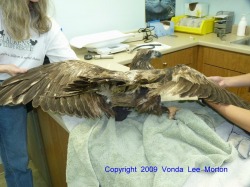
(Special thanks to high school work-study student Brittany Devaney, who works part-time at Smalley’s, for taking charge of my camera and documenting this lady’s vet visit while Shelley and I concentrated our efforts on the bird.)
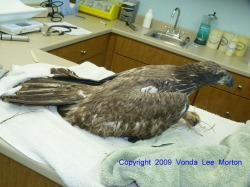
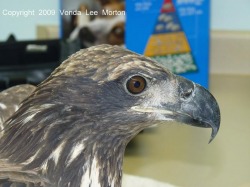
As of this afternoon, Steve reports that she’s eating well and very alert and aggressive so his plan, weather permitting, is to release her this weekend. What a sight that should be!
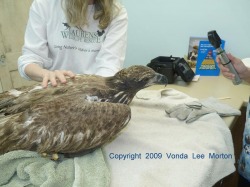
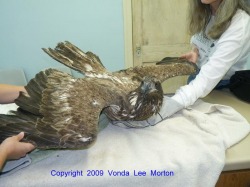
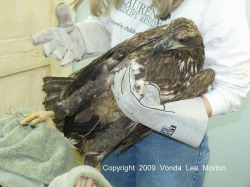
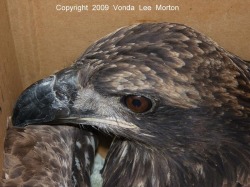
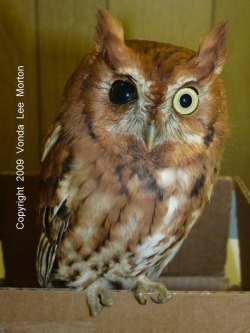
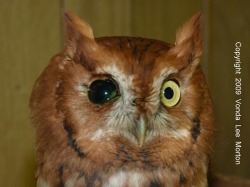
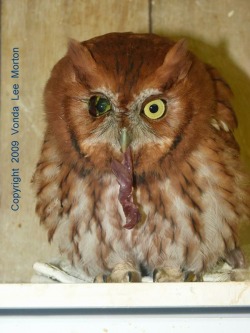
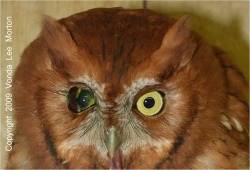
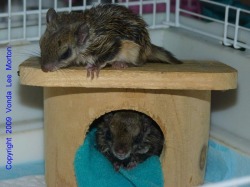
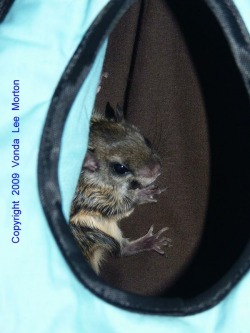
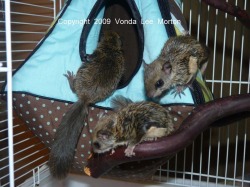
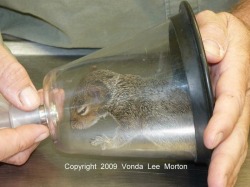
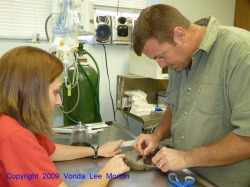

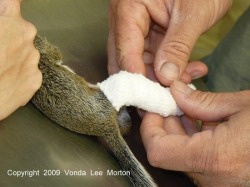
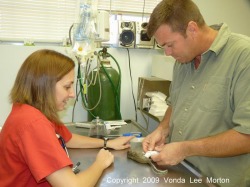
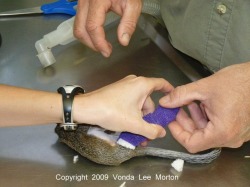
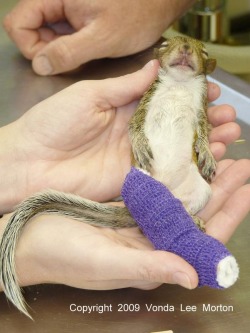
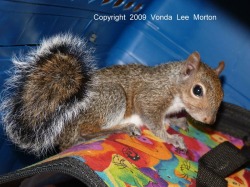
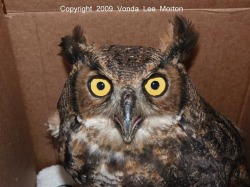
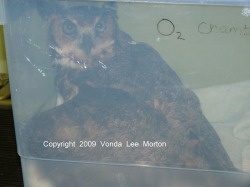
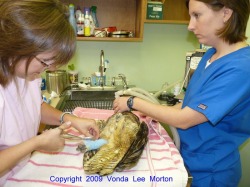
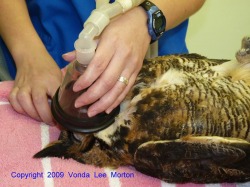
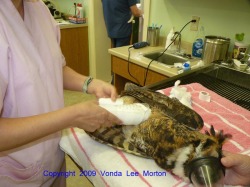
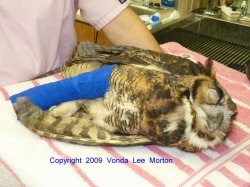
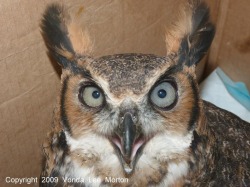
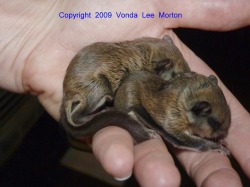
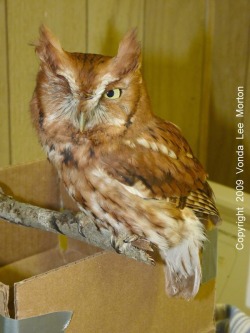
 RSS Feed
RSS Feed
